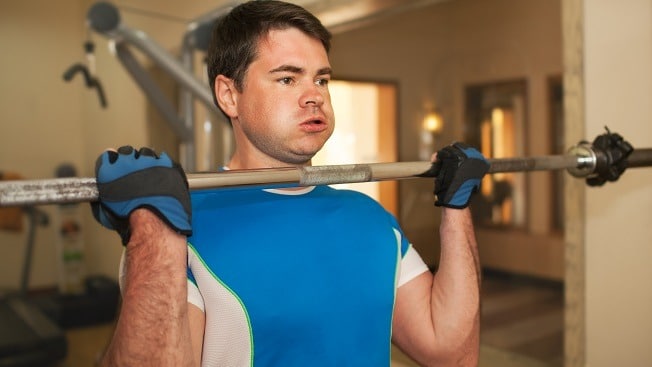Is there such a thing as over-exercising? The quick answer is “yes” and it can happen to anyone, not just athletes.
As a health professional, I encourage my patients to include more physical activity in their daily lives. The benefits of regular workouts – e.g. better heart health, healthier body weight, improved sleep, stronger immune functioning – are tremendous assets to improving overall health and wellness.
But, is it possible you may be rigorously exercising past the point of “healthy?” Over-exercising isn’t discussed much but is crucial to recognize. It’s important to understand and recognize signs that your exercise habits are pushing your body and mind too hard that’s likely harming your health instead of enhancing it.
Signs indicating you may be over-exercising
If you’re that person who is always pushing the limits when exercising, beware. From a beginner to an ultra-elite athlete, overtraining is real and could only make things worse for your health. Since all of us are individuals at different levels of fitness, what may be over-exercising for one person could be completely different for someone else. For example, if you consider yourself a ‘beginner’ to working out, trying to walk 10 miles for the first time in one day is likely not a good idea. But, if you are a seasoned athlete, that same feat may not be a challenge.
In other words, overtraining happens to people who are just starting an exercise program and also to veteran athletes.
Here are signs of over-exercising that could sideline you if you’re not careful:
- Fatigue: Feeling constantly tired, especially when working out, is a sign your body is not getting sufficient sleep and rest in between workouts.
- Insomnia: Sleeplessness or having a hard time falling asleep can be a sign of over-exercising. When exercising, do an amount that works for your body and not much more than that.
- Chronic colds, infections, and other illnesses: It’s well-documented that moderate exercise is excellent for immune health. However, over-exercising makes it more difficult for your immune system to function well which can backfire by reducing your body’s ability to fight off bacteria and viruses.
- Inflammation: Too much of a good thing, like overtraining, can trigger systemic inflammation that could lead to joint pain to poor digestion.
- Reduced stamina: If you’ve been hitting the gym harder than ever, and yet find your stamina has declined, it’s time to cut back on the frequency, duration, and intensity of your workouts. Give yourself a couple of days of rest and recovery helping your body heal to be ready for your next workout.
- Aches, pains, and soreness that don’t go away: When first starting an exercise regimen or adding in a new workout routine, it’s not uncommon to have a couple of days of soreness. But if the aches and pains are not quitting, then it could be a sign of musculoskeletal damage from poor recovery. Listen to your body; it’s trying to tell you to back off a bit so it has time to heal.
- Feeling moody: Exercise increases the release of endorphins, the feel-good hormones. But when overdoing it, it can leave you in a constant state of feeling sad, tired, and with mental fatigue. These mood alterations are a result of a heavy workload and inadequate recovery. Again, it’s time to slow down.
- Exercise-induced amenorrhea: For women, excessive exercise can lead to amenorrhea, a condition causing women to stop having monthly periods. It’s not just the amount of exercise that influences the menstrual cycle, but also calorie restriction and certain types of exercise, such as long-distance running and ballet dancing, are more likely to cause amenorrhea. While some women welcome an absence of their menstrual cycle, there can be serious long-term health consequences of exercise-induced amenorrhea. Because of the altered production of reproductive hormones, women with amenorrhea will be estrogen-deficient. Too little estrogen can lead to infertility, atrophy of the vagina and breast, and osteoporosis which can lead to fractures of the hip, spine, and other areas.
- Increased risk of injuries: For both men and women, over-exercising raises the risk of overuse injuries like tendinitis and stress fractures which result from repetitive trauma. Common offenders causing overuse injuries are going too fast, exercising for too long, or simply doing too much of one type of activity straining certain muscles. The improper technique also takes a toll on your body. Using poor form, like when swinging a golf club or throwing a baseball, can overload certain muscles and cause an overuse injury.
Listen to your body when exercising
Exercising is one of the most important health habits all of us should be doing but practiced safely and within reason. If you’re a newbie to working out, discuss with your doctor the best plan for you on gradually adding in exercise. Listen to your body and pace yourself to avoid setbacks and to safely increase activity.
For seasoned athletes, listening to your body still applies, pacing yourself, and taking steps to avoid overuse injury are especially important.
For anyone with a regular exercise routine, mix things up with cross-training. Instead of focusing on one type of exercise, build in variety into your fitness program. Use a variety of low-impact cardio activities such as walking, swimming, and biking; strength activities like push-ups, pull-ups, lifting weights; and stretching/flexibility moves such as yoga, Pilates, or Tai Chi.
Most importantly, do some form of physical activity most days of the week without overdoing it.


